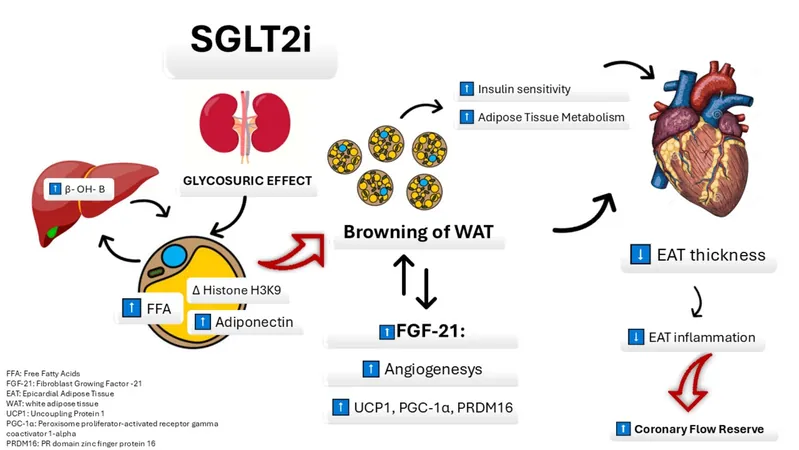
Revolutionary Luminex Assay Promises to Detect Capripoxvirus and Rift Valley Fever Antibodies in Livestock!
2024-12-27
Author: Nur
The Impact of Capripox Diseases and Rift Valley Fever
Capripox diseases, caused by the sheeppox virus (SPPV), goatpox virus (GTPV), and lumpy skin disease virus (LSDV), significantly threaten the livelihoods of millions in low-income households, particularly in endemic regions of Africa, the Middle East, Europe, and Asia. The repercussions extend to agricultural economies where these diseases curtail ruminant industries, crucial for national revenue.
Rift Valley fever, a zoonotic disease caused by RVFV, also poses a significant risk to these livestock species, leading to severe outcomes like high neonatal mortality and abortion rates in animals, and even potential encephalitis and hemorrhagic fever in humans. Despite the damages these diseases inflict, control measures remain inconsistent, particularly for RVF, as routine vaccinations and surveillance are still in their infancy in many endemic countries, raising concerns about future outbreaks, especially with the added pressure of climate change.
Innovative Diagnostic Techniques to the Rescue!
To combat this ongoing threat, a novel duplex serological Luminex assay has been developed, allowing for a rapid and accurate simultaneous detection of antibodies against both capripox viruses and RVFV. This assay uses magnetic polystyrene beads coated with specific antigens to identify antibodies in serum samples, making it a promising alternative to traditional, labor-intensive methods like the virus neutralization test (VNT) and enzyme-linked immunosorbent assays (ELISA).
Despite existing vaccines against RVF, the lack of systematic implementation of control measures means that farmers face continuing losses. The newly developed assay could revolutionize the way we monitor and control these diseases by providing a single point of analysis, ultimately enhancing livestock health management practices.
A Breakthrough in Livestock Health and Commerce
The importance of rapid diagnostics cannot be overstated—especially for trade purposes. Countries that rely on livestock for economic stability need efficient testing methods to guarantee the safety and health of their animals for both domestic and international markets. This Luminex assay, utilizing advanced multiplex serological techniques, could serve as a game-changer, significantly aiding in sero-surveillance and overall disease control.
Research Highlights and Findings
In trials, this innovative assay showcased an impressive diagnostic sensitivity and specificity, detecting 98% of positive samples for LSD and near-perfect results for RVFV. Participants in the study included bovine, sheep, and goat populations, based on empirical sera obtained from regions known to be affected by these viruses. Results indicated that antibodies could be detected as early as 7 days post-infection and maintained in samples up to 56 days, underscoring the assay’s effectiveness and practicality for long-term monitoring.
The Future Looks Bright
As countries continue to grapple with the implications of Capripox diseases and Rift Valley fever, the deployment of this advanced diagnostic tool could provide much-needed clarity and control in managing livestock health. Improved understanding and rapid detection pave the way for better preventative measures and could lead to significant economic benefits in agricultural sectors globally.
Farmers and stakeholders in the agriculture industry are encouraged to stay updated as this technology is rolled out in partner regions. The innovative Luminex assay holds promise not only for disease management but also in paving a path towards healthier livestock and a more resilient agricultural economy!


 Brasil (PT)
Brasil (PT)
 Canada (EN)
Canada (EN)
 Chile (ES)
Chile (ES)
 España (ES)
España (ES)
 France (FR)
France (FR)
 Hong Kong (EN)
Hong Kong (EN)
 Italia (IT)
Italia (IT)
 日本 (JA)
日本 (JA)
 Magyarország (HU)
Magyarország (HU)
 Norge (NO)
Norge (NO)
 Polska (PL)
Polska (PL)
 Schweiz (DE)
Schweiz (DE)
 Singapore (EN)
Singapore (EN)
 Sverige (SV)
Sverige (SV)
 Suomi (FI)
Suomi (FI)
 Türkiye (TR)
Türkiye (TR)